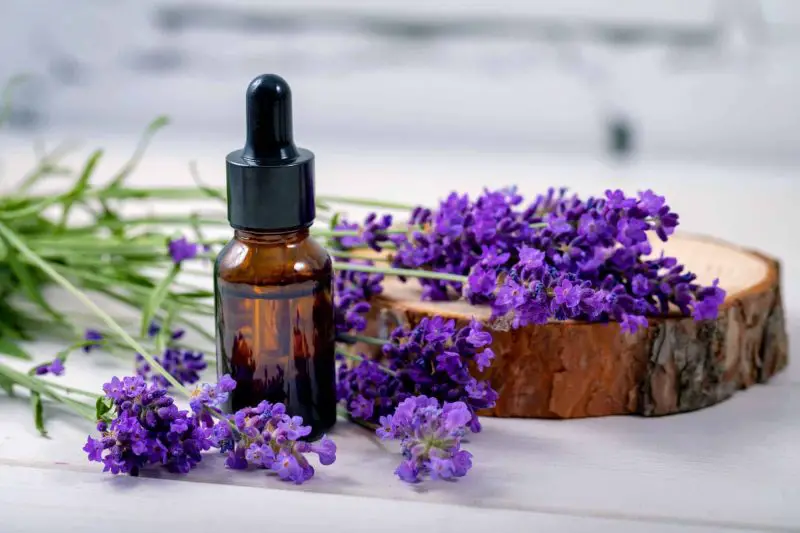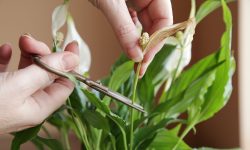Lavender oil has long been celebrated for its calming scent, healing properties, and ability to elevate everyday wellness routines. From soothing headaches to easing anxiety, this fragrant oil is a favorite in aromatherapy and natural beauty alike. Making your own lavender oil at home not only guarantees purity but also connects you more deeply with the natural benefits of this beloved herb.
In this guide, you’ll explore everything from harvesting fresh lavender to extracting its essential essence. Whether you’re crafting it for stress relief, skincare, or home rituals, learning how to make lavender oil will bring a new sense of mindfulness into your lifestyle.
Choosing the Right Lavender for Oil Extraction

Understanding the Best Lavender Varieties for Oil
Not all lavender varieties are created equal when it comes to oil production. English lavender, known botanically as Lavandula angustifolia, is widely preferred for its sweet aroma and high-quality oil. It is particularly effective for calming purposes and blends well with other oils.
French lavender (Lavandula dentata) and Spanish lavender (Lavandula stoechas) are more decorative and may have sharper or less soothing scents. These varieties still produce oil, but the result may be less desirable for aromatherapy. Hybrid types like Lavandin are often used commercially due to higher oil yields, although their scent is more camphorous than sweet.
Where and When to Source Lavender
To create high-quality lavender oil, sourcing fresh, fragrant lavender is key. The best time to harvest or purchase lavender is when about half the buds on each stem have opened—usually in mid to late summer depending on the variety and your local climate. At this stage, the essential oil concentration is at its peak.
If you grow your own lavender, cut it in the morning after the dew has dried but before the heat of the day. For those sourcing lavender from markets or farms, choose bundles that are brightly colored, strongly aromatic, and recently harvested. Organic growers or trusted herbal suppliers offer the most consistent quality for infusion purposes.
Proper timing and selection ensure your oil will retain a rich, long-lasting scent and potent therapeutic properties.
Preparing Lavender for Oil Infusion
Proper preparation is key to producing high-quality lavender oil. Start by using clean, aromatic blooms—either fresh or dried. If you harvest fresh lavender, gently shake off insects and let the stems wilt in a cool, shaded spot for a day or two. This helps reduce moisture while preserving essential oils. Avoid rinsing the flowers, as excess water can cause mold during infusion.
For dried lavender, ensure it’s stored well—dry, dark, and fragrant. Lightly crush or bruise the buds to release more of their natural oils before use. Choose a mild carrier oil like sweet almond or jojoba, and warm it gently using a double boiler or warm water bath. Avoid overheating, which can damage the lavender’s delicate compounds.
Once both ingredients are ready, place the lavender into a clean, dry jar and pour in the warm oil, making sure the flowers are fully submerged. This step sets the foundation for a fragrant, soothing infusion that retains lavender’s therapeutic benefits.
Selecting the Right Carrier Oil
Choosing the appropriate carrier oil is just as important as selecting the lavender itself. The carrier oil not only dilutes the essential compounds in lavender but also influences the final scent, shelf life, and therapeutic properties of the infused oil. For aromatherapy and relaxation purposes, it’s best to select a light, stable oil that absorbs well into the skin and doesn’t overpower lavender’s calming fragrance.
Sweet almond oil is a popular choice thanks to its mild scent, smooth texture, and compatibility with most skin types. It’s rich in vitamin E, making it nourishing and soothing for topical use. Jojoba oil, technically a wax ester, closely mimics the natural oils in human skin and has a long shelf life, making it ideal for people with sensitive or acne-prone skin.
For those who prefer a neutral scent, fractionated coconut oil is a great option. It stays liquid at room temperature, doesn’t go rancid easily, and creates a clean, light base. Grapeseed oil is another fast-absorbing alternative, though it has a shorter shelf life and should be used more quickly. Olive oil can also be used, especially for homemade remedies, but its strong aroma may compete with lavender’s floral notes.
Consider your personal needs—whether you’re making massage oil, a facial serum, or a sleep aid—and match the carrier oil accordingly. Always choose cold-pressed, unrefined oils when possible to preserve the natural nutrients and ensure a cleaner, more effective infusion.
Infusion Techniques for Homemade Lavender Oil
Infusing lavender oil at home can be done using several tried-and-true methods, each offering different benefits in terms of potency, preparation time, and ease of execution. The two most popular techniques are the cold infusion and the gentle heat infusion, both of which allow you to extract the soothing essence of lavender into your carrier oil.
Cold Infusion (Solar Infusion)
Cold infusion is the slowest method but often yields the most fragrant and balanced result. To begin, fill a clean glass jar with dried lavender flowers, ideally filling it about two-thirds of the way. Pour your chosen carrier oil over the flowers until they are completely submerged. Then seal the jar tightly and place it in a sunny windowsill or a warm, indirect light location for at least two to four weeks. During this time, the warmth from the sunlight gradually coaxes the aromatic oils from the lavender into the carrier oil.
You’ll want to gently shake the jar every few days to keep the plant material well mixed and fully coated. Once the infusion period is complete, strain the oil through cheesecloth or a fine mesh sieve, and transfer it to a clean, dark-colored glass bottle to preserve its quality.
Gentle Heat Infusion
This method is faster and ideal when you want a usable product within a day or two. Place the dried lavender and carrier oil into a double boiler or heat-safe glass bowl over a pot of simmering water. Let the mixture heat gently for 1 to 3 hours, making sure the temperature doesn’t exceed 120°F (49°C) to avoid degrading the essential properties of the oil and lavender. Stir occasionally to encourage even extraction.
Once infused, strain the oil and bottle it as you would with the cold method. This technique is especially helpful in colder climates or during winter when sunlight is limited.
Quick Tip: Use a Crockpot or Yogurt Maker
For home gardeners and DIY lovers, a crockpot set on the “warm” setting or a yogurt maker can offer a safe, consistent low temperature for infusing lavender. This method can strike a balance between the slow solar infusion and the direct-heat method, giving you a high-quality oil with less hands-on effort.
Regardless of the technique you choose, make sure all utensils and containers are clean and dry before use to avoid introducing moisture, which could lead to mold or spoilage. Infusion is a craft that improves with experience, and experimenting with timing, ratios, and oil types will help you perfect your personal lavender oil recipe over time.
Enhancing Your Lavender Oil for Specific Uses
Homemade lavender oil is already a wonderfully versatile product, but with a few thoughtful additions or slight modifications, you can tailor it to better suit your personal needs—whether for stress relief, sleep support, skincare, massage, or natural cleaning. Enhancing your lavender oil allows you to maximize its therapeutic potential and adapt it to various routines and lifestyles.
For Aromatherapy and Stress Relief
If your primary goal is to use lavender oil for emotional wellness, especially to manage stress, tension, or anxiety, consider blending it with a few drops of calming essential oils like chamomile, bergamot, or frankincense. These pair beautifully with lavender’s floral notes and amplify its relaxation effects.
Use this enhanced oil in a diffuser by adding a few drops to water or massage a small amount onto your temples, neck, or wrists. To maintain potency and safety, use only essential oils that are skin-safe and dilute any strong oils properly in your base lavender infusion.
For a grounding experience, try adding a drop or two of vetiver or sandalwood oil to your blend—these deepen the aroma and help center the mind during meditation or breathing exercises.
For Sleep and Bedtime Routines
To make a more sleep-targeted lavender oil, infuse your base oil with additional sleep-promoting herbs such as dried hops, lemon balm, or passionflower. You can also blend in essential oils like clary sage or cedarwood, which work well with lavender in calming the nervous system.
This enhanced oil can be lightly massaged into the soles of the feet, the back of the neck, or the chest before bedtime. You can also add a few drops to a warm bath or dab it onto your pillowcase for a gentle overnight release of aroma.
For Skincare and Massage
Lavender is renowned for its skin-soothing and anti-inflammatory properties. When using your oil for skincare, especially for dry, irritated, or acne-prone areas, consider infusing the oil with dried calendula petals or chamomile flowers. These botanicals support skin healing and reduce redness.
To further boost benefits, blend your oil with essential oils like tea tree (for acne), geranium (for balancing), or helichrysum (for anti-aging). Always perform a patch test before applying to larger skin areas, especially if you’re mixing stronger actives.
For massage purposes, you may wish to create a slightly richer blend by using carrier oils like sweet almond or jojoba, which offer additional skin nourishment and slip during application. Add warming oils like ginger or black pepper in very small quantities for sore muscles or circulation.
For Homemade Cleaning Products
Lavender oil can be used as an all-natural cleaning ingredient thanks to its antibacterial and antifungal properties. To make a simple cleaning spray, mix your homemade lavender oil with white vinegar, water, and a few drops of lemon or eucalyptus essential oil. This blend can be used to clean kitchen counters, yoga mats, or bathroom surfaces while leaving a pleasant, non-toxic fragrance behind.
You can also add a few drops of lavender oil to laundry rinse water or wool dryer balls for fresh-smelling linens and clothing. When used regularly, this natural approach reduces chemical exposure in your home while maintaining a clean, calm atmosphere.
For DIY Beauty Products
Lavender oil enhances many DIY beauty projects. You can add it to homemade sugar scrubs, bath bombs, body butters, or lip balms for fragrance and skin-calming benefits. Combine with shea butter or coconut oil to make a rich body balm, or mix with beeswax and vitamin E oil for a protective lip treatment.
To make a soothing after-sun gel, mix lavender oil with aloe vera gel and store it in the fridge. This can help cool sunburns, insect bites, or other minor skin irritations.
Safety Guidelines and Storage Tips
To ensure your homemade lavender oil remains safe and effective, it’s important to follow basic usage and storage practices. Even though lavender is gentle, always do a patch test before applying it widely, especially if you’ve added other essential oils. For skin use, a dilution of 1–3% essential oil in a carrier oil is generally safe for adults.
If your oil includes citrus additions, avoid sun exposure after application due to potential photosensitivity. For best storage, keep your oil in dark glass bottles, tightly sealed, and place them in a cool, dry, dark location. This helps protect the oil from heat, light, and air exposure that can degrade quality.
The average shelf life of lavender-infused oil ranges from 6 to 12 months depending on the carrier used. Jojoba oil offers longer stability, while lighter oils like sweet almond may spoil faster. If the oil smells rancid or looks cloudy, it’s time to discard it. Label your bottles with the infusion date and consider adding vitamin E or rosemary extract to prolong freshness.
Always handle your oil with clean, dry tools to avoid contamination, and avoid touching the dropper or opening with fingers to keep the blend pure and potent.
Benefits of Lavender Oil for Aromatherapy
Lavender oil is one of the most widely used essential oils in aromatherapy due to its broad range of scientifically supported and time-tested benefits. Its therapeutic value stems largely from linalool and linalyl acetate, two naturally occurring compounds with calming and healing properties.
One of the most prominent effects is its ability to reduce stress and anxiety. Inhaling lavender-scented air triggers the limbic system, the brain’s emotional center, helping regulate nervous system responses. This makes lavender oil particularly useful during meditation, before sleep, or in high-stress environments.
Lavender is also known for its sleep-enhancing benefits. Diffusing the oil in a bedroom or adding a few drops to a pillow can help improve sleep quality, reduce nighttime awakenings, and promote deeper rest, especially in people suffering from insomnia or disrupted sleep cycles.
Another key benefit is its pain-relieving effect. When used in massage or topical blends, lavender oil may ease headaches, muscle tension, and even menstrual cramps by improving circulation and relaxing tense areas. It’s also beneficial for calming heart rate and supporting cardiovascular balance during emotional strain.
Finally, its gentle antimicrobial properties make it ideal for purifying the air in diffusers, while also enhancing mood and mental clarity. The overall result is a more balanced mind, better emotional regulation, and a deeper sense of peace.
Other Uses for Homemade Lavender Oil
Skin Care and Beauty
Lavender oil’s anti-inflammatory and antimicrobial properties make it ideal for soothing minor burns, cuts, and acne-prone skin. When diluted in a carrier oil, it can help calm eczema, reduce redness, and promote skin healing. Many people use it in DIY facial oils, body lotions, and lip balms for its gentle fragrance and skin-nourishing benefits.
Hair and Scalp Health
Incorporating lavender oil into hair care routines can support scalp health and encourage hair growth. Massaging diluted oil into the scalp may reduce dandruff and relieve itchiness. Some also use it as a natural fragrance enhancer in hair serums or masks.
Household Freshening
Thanks to its deodorizing and antifungal properties, lavender oil is commonly added to homemade cleaners, linen sprays, and diffusers. A few drops in a water bottle with vinegar can make an all-purpose cleaning spray, while a lavender sachet in your closet helps repel moths and freshen fabrics naturally.
Sleep and Stress Support
Even outside aromatherapy sessions, lavender oil helps induce relaxation. Rubbing a few drops (diluted) on the temples or pillow can support deeper, more restful sleep. Adding it to a warm bath before bedtime enhances its calming effect.
Natural Insect Repellent
Lavender oil serves as a gentle yet effective repellent against mosquitoes, flies, and even fleas. Blending it into a skin-safe spray with witch hazel and citronella provides a fragrant shield during outdoor activities.
Massage and Joint Relief
When mixed with a carrier oil, lavender oil makes a great massage blend that relaxes muscles and may ease tension headaches or joint stiffness. It’s particularly helpful after physical activity or long hours at a desk.
Pet Care
In small, carefully diluted amounts, lavender oil can help repel pests like fleas in pets. It may also be used to calm anxious animals, but only under vet-approved guidance to ensure safety.
Frequently Asked Questions
Can I Use Fresh Lavender to Make Lavender Oil?
Yes, but it must be thoroughly dried first. Fresh lavender contains moisture that can cause the oil to spoil quickly. Drying the flowers ensures longer shelf life and better oil infusion.
How Long Does Homemade Lavender Oil Last?
Properly stored in a cool, dark place, homemade lavender oil can last six to twelve months. The type of carrier oil you use may also affect shelf life, with jojoba oil offering longer stability.
Is Lavender Oil Safe for Children and Pets?
Lavender oil is generally safe when used properly, but always dilute it before applying to children’s skin. For pets, consult a veterinarian, as essential oils can be toxic if ingested or improperly used.
What’s the Difference Between Infused Lavender Oil and Lavender Essential Oil?
Infused lavender oil is made by soaking lavender in carrier oil and is less concentrated. Lavender essential oil is steam-distilled and highly potent, often requiring dilution before use. Both are beneficial, but serve different purposes.
Can I Use Lavender Oil Internally?
Do not ingest lavender oil unless under the guidance of a qualified healthcare provider. While some culinary-grade essential oils are safe in small quantities, homemade versions are not intended for internal use.
Conclusion
Crafting your own lavender oil opens a world of natural healing and tranquility. With just a handful of ingredients and a little time, you can create a personal blend that supports your emotional wellness, beauty routines, and home atmosphere. Whether used in a diffuser at night, massaged onto sore shoulders, or spritzed across linens, lavender oil brings calm wherever it goes.
By understanding the nuances of lavender varieties, infusion methods, and practical applications, you’re equipped to create high-quality oil at home. Let the process be part of the relaxation—a fragrant, hands-on experience that enhances your everyday life with the simple elegance of lavender.






